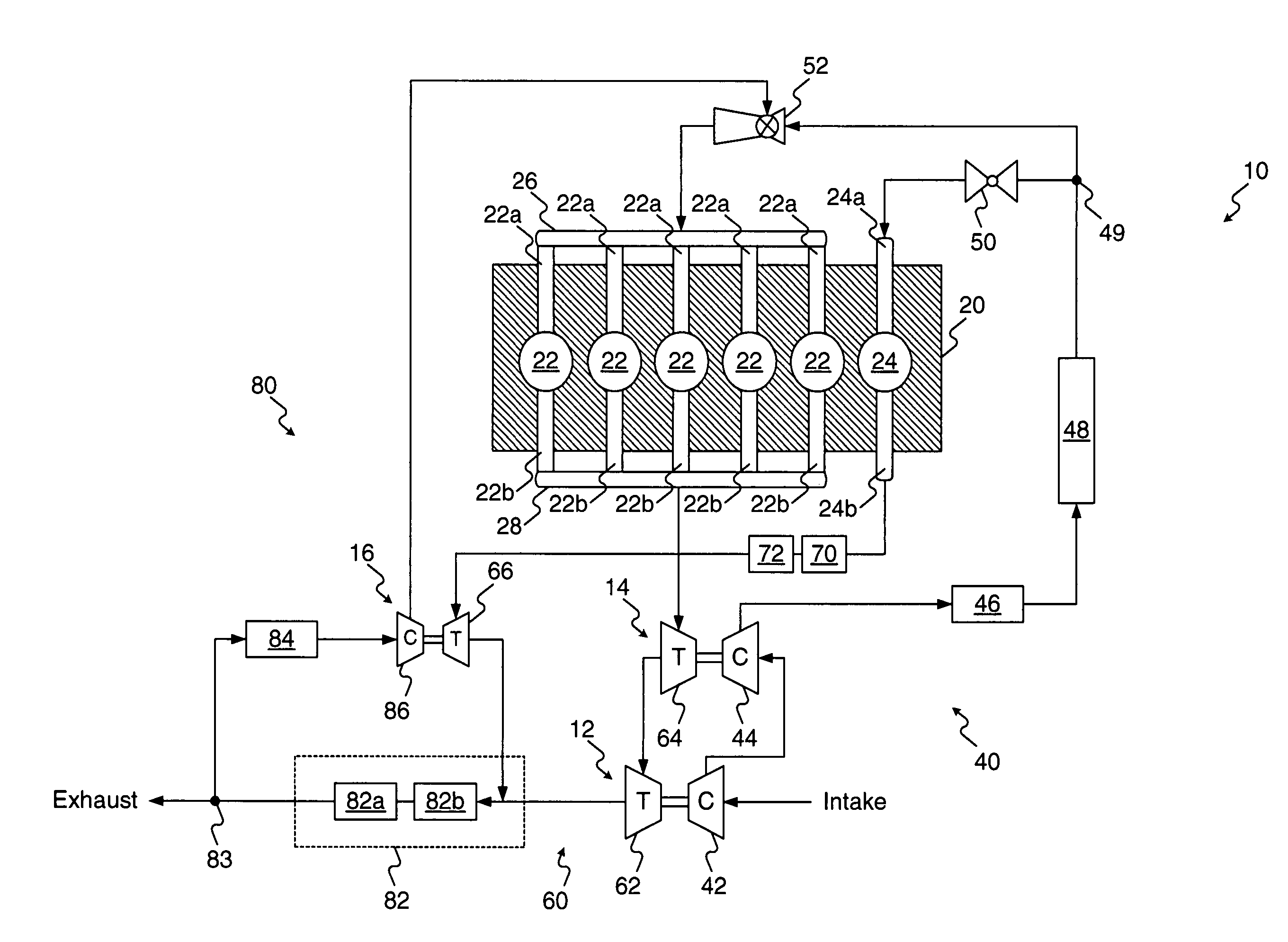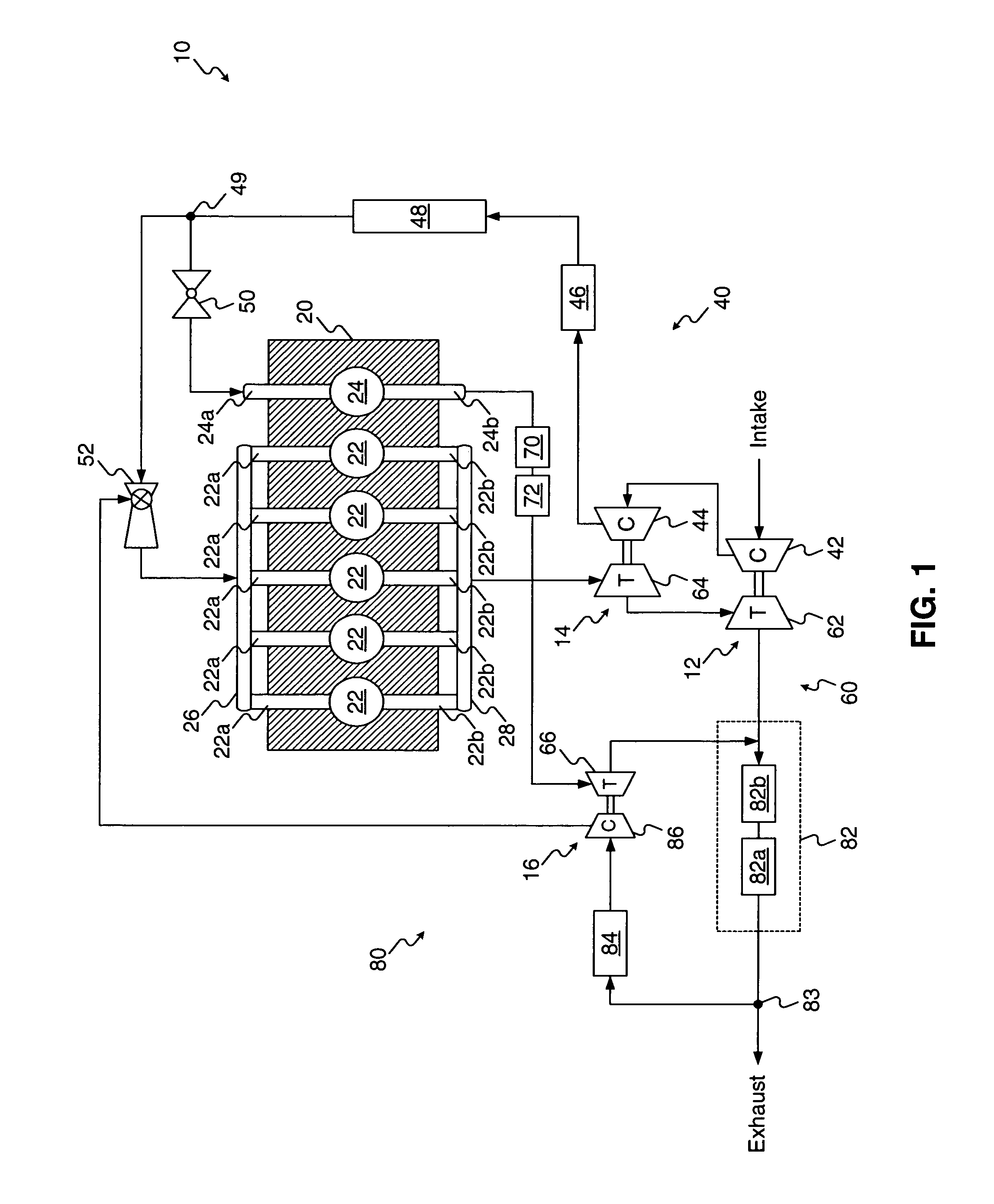Turbocharged exhaust gas recirculation system
a technology of exhaust gas recirculation and turbocharger, which is applied in the direction of machines/engines, mechanical equipment, and non-fuel substance addition to fuel, etc., can solve the problems of high cost of storage of such chemicals, hazardous storage of ammonia, and constant replenishment, and achieve the effect of reducing the amount of particulates
- Summary
- Abstract
- Description
- Claims
- Application Information
AI Technical Summary
Benefits of technology
Problems solved by technology
Method used
Image
Examples
Embodiment Construction
[0018]FIG. 1 illustrates an exemplary exhaust gas recirculation (“EGR”) system 10, for a powered system, such as a work machine (not shown). The exhaust recirculation system 10 includes a power source. In the exemplary exhaust recirculation system 10, the power source is an internal combustion engine 20, e.g., a diesel engine, a gasoline engine, a gaseous fuel-powered engine, and the like, or any other engine apparent to one skilled in the art. Alternatively, the engine 20 may be another source of power, such as a furnace, or another suitable source of power for a powered system, such as a factory or power plant.
[0019]The engine 20 includes a plurality of cylinders, including a first cylinder group 22 and a second cylinder group 24. Each of the cylinder groups 22, 24 includes one or more cylinders. As will be discussed in detail below, the operation of the cylinders of the cylinder groups 22, 24 depends on the ratio of air to fuel that is injected into the cylinders 22, 24 during th...
PUM
 Login to View More
Login to View More Abstract
Description
Claims
Application Information
 Login to View More
Login to View More - R&D
- Intellectual Property
- Life Sciences
- Materials
- Tech Scout
- Unparalleled Data Quality
- Higher Quality Content
- 60% Fewer Hallucinations
Browse by: Latest US Patents, China's latest patents, Technical Efficacy Thesaurus, Application Domain, Technology Topic, Popular Technical Reports.
© 2025 PatSnap. All rights reserved.Legal|Privacy policy|Modern Slavery Act Transparency Statement|Sitemap|About US| Contact US: help@patsnap.com



